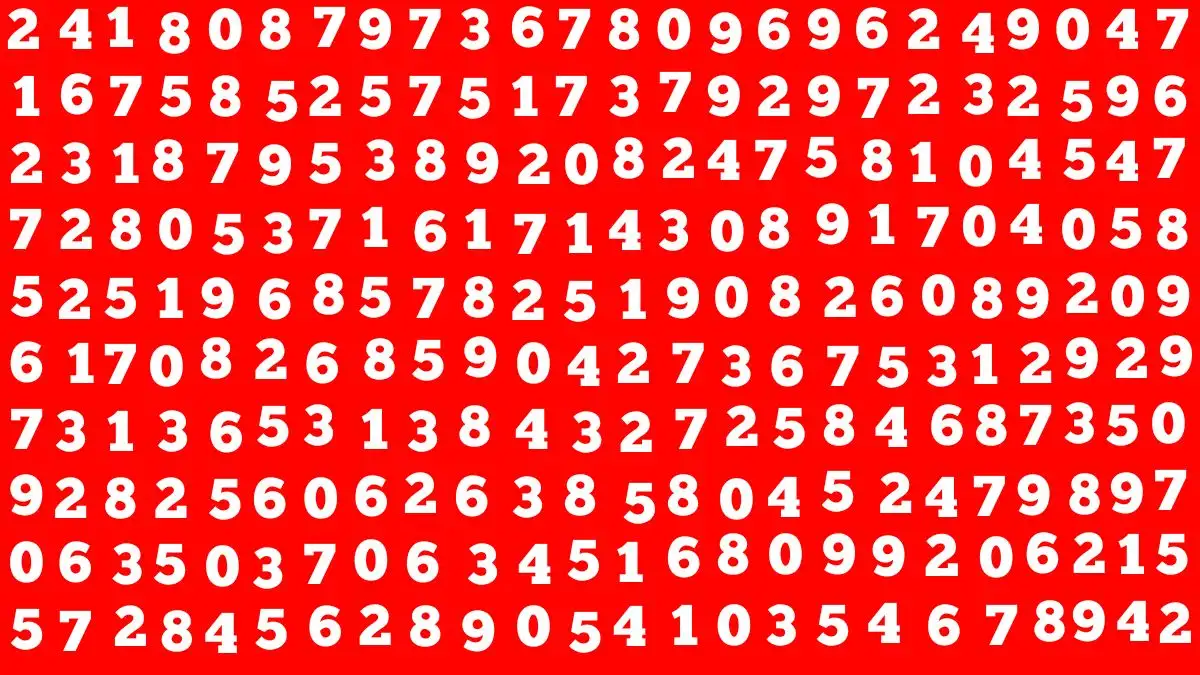- Fresherslive »
- Optical Illusion »
- Test Visual Acuity: If you have 50/50 HD Vision Find the Number 2366 in less than 10 Secs
Test Visual Acuity: If you have 50/50 HD Vision Find the Number 2366 in less than 10 Secs
by Sangeetha
Updated Dec 06, 2023

Optical Illusion
An optical illusion refers to a visual phenomenon that tricks the brain into perceiving something that is not necessarily consistent with the physical reality of the viewed object. These illusions often exploit the way the brain processes visual information, leading to misinterpretations, distortions, or misperceptions.
Optical illusions can occur for various reasons, including the brain's interpretation of color, light, perspective, and patterns. They highlight the complex processes involved in visual perception, demonstrating that what we see is not always a direct reflection of the actual physical stimuli.
Test Visual Acuity: If you have 50/50 HD Vision Find the Number 2366 in less than 10 Secs - Explanation
- Focus: Ensure you are in a well-lit area, and take a moment to let your eyes adjust.
- Time Limit: You have a mere 10 seconds to spot the elusive number 2366.
- Precision: The number may be artfully concealed within the image, so pay close attention to details.
Visual Acuity Explanation: Visual acuity measures the clarity of vision, and a 50/50 HD vision indicates excellent sharpness comparable to perfect 20/20 vision. This test is designed to challenge your visual acuity by embedding the number 2366 within a complex visual field.
Finding Number 2366: Scan the image systematically, focusing on different sections. Look for variations in shading, contrast, or patterns that could reveal the hidden number. Remember, speed is key – you only have 10 seconds!

Test Visual Acuity: If you have 50/50 HD Vision Find the Number 2366 in less than 10 Secs - Solution:
The number 2366 might be subtly camouflaged, often blending into the background. Try focusing on the negative space or areas with intricate patterns. Don't hesitate to use your peripheral vision. If you're having trouble, relax your gaze and let the number emerge naturally.
Visual acuity is crucial for daily activities such as reading, driving, and recognizing faces. Testing your ability to spot subtle details offers a fun and engaging way to evaluate the sharpness of your vision.
Ready for the challenge? Start the timer and seek out the hidden number 2366 in less than 10 seconds. Enjoy the test, and feel free to share it with friends to compare your visual acuity prowess!

Test Visual Acuity: If you have 50/50 HD Vision Find the Number 2366 in less than 10 Secs - FAQs
Optical Illusion or visual Illusion is an illusion caused by the visual system. It is characterized by a visual perception that appears to differ from reality.
Optical Illusion is a visual deception where we get deceived by what we see or misunderstand the thing we saw. Optical Illusion deceives and confuses people by playing with color, light, and patterns
Optical Illusion is said to be categorized into three types such as physical, physiological, and cognitive illusions.







